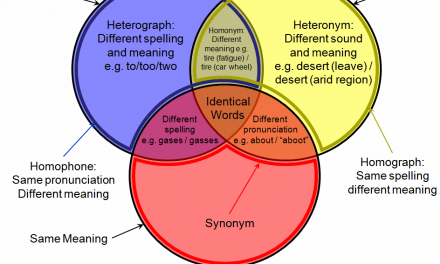A critical look at the claim that Hinduism does not enjoin conversions as the so-called revealed religions do. Article by M.S. Prabhakara appeared in The Hindu, November 7, 2008. Highly recommended reading by Sakshi Research Team.
A peculiar aspect of the controversies about religious conversions — leaving aside the absence of verifiable data about their extent and nature — is the axiomatic assumption that the two major minority religions in India, Christianity and Islam, are poaching on the “exclusive” territory of Hinduism. Related to this is another near universally held opinion that unlike revealed religions like Christianity or Islam where proselytisation is a given, Hinduism is an innate, self-contained system of beliefs, the sanatana dharma, that which is eternal with no beginning and no end, with no Prophets or Texts; and so does not engage in proselytisation. Hinduism, as its proponents never tire of saying, is strictly speaking not a religion at all but a way of life, and so is universally applicable without its adherents making any effort to seek converts. Because of this seeming elasticity and openness and passive approach to proselytisation, the argument goes, the faith is peculiarly vulnerable to malevolent poachers.
While admitting that modern varieties of Hinduism have engaged in proselytisation, especially in the West, the argument is that such converts are very few and the process is not comparable to the ‘mass conversions’ to Islam and Christianity.
Of course, what is not mentioned is that even if those who swear by sanatana dharma, of which varnashrama dharma is an integral part, would want to engage in proselytisation, they simply cannot undertake such initiatives, for where would the new convert be placed in the ordained chaturvarnas?
But these are mere debating points, irrelevant in an issue charged with emotions, real and manufactured. So, let us consider the merits in the claim that Hinduism does not enjoin conversions. I confine myself to some irrefutable facts of history in Assam and its neighbourhood in northeast India.
When the ancient land of Kamarupa (Assam) was conquered in the early 13th century by Ahoms, an offshoot of the Shan or Tai people from what is now Thailand, the conquerors brought with them their own religious and cultural practices, and even priests. However, the land and the people they conquered were predominantly Hindu. This could be said even of the substantial sections of the people who were so-called animists, for Hinduism of by its nature then, as now, admitted a variety of conflicting practices and paid obeisance to a variety of gods and goddesses.
However, in a unique instance of the conquerors succumbing to the mores of the conquered, the Ahom rulers and even their priests, who worshipped gods of their ancestral memories even in the new land, abandoned these beliefs and accepted the gods and beliefs of the people they had conquered: put simply, they ‘Hinduised’ themselves.
‘Hinduisation’
The following citation from the introductory chapter of Anglo-Assamese Relations, 1771-1826, by Surya Kumar Bhuyan, Guwahati, 1949, is revealing: “The Ahom kings were not bigoted adherents of their faith, and they did not force their religion on anyone … The Hinduisation was partly the result of a number of accidental circumstances, and partly the outcome of a deliberate policy … They realised the dangers springing from their being in a hopeless minority in a kingdom where the majority were Hindus. They thought they would add to their strength if they became one with their subject by embracing the latter’s faith …”
However, despite the apparent seamlessness with which the conquerors accepted their subjects’ faith, it transpires that Brahminical influences were at work. Here is another relevant passage from the introductory chapter of Anglo-Assamese Relations …: “Hindu influence first entered the Ahom court during the reign of Sudangpha Bamuni-konwar (1397-1407) who had been brought up in a Brahmin family. The influence was more marked in the reign of King Pratap Singha (1603-1641) who was personally grateful to Brahmin priests for ridding him of a ‘demon’ which had possessed him during his princehood … The first Ahom monarch to accept Hinduism formally was Jayadhwaj Singha (1648-1663) …”
That this acceptance of Hinduism did not prevent conflicts between the adherents of Vaishnavism, the predominant faith in Assam at that time, and Shaktism, favoured by the Ahom ruling class who considered Vaishnavism “too passive and mild to be suitable for a ruling class who had to maintain their domination by force of arms” is again of a piece with the history of other Hindu kingdoms of medieval India where by and large the subjects favoured Vaishnavism while the rulers favoured Shaktism. The point to note is that the role of the Brahmin clergy was crucial at every stage of the conversion of the king and the upper echelons of the Ahom court and the subsequent schisms and the prolonged conflicts of the late 18th century that had dimensions of caste, tribe, ethnicity, faith and belief, that historians consider was one of the factors that led to the debilitation, and finally the defeat in war and the destruction of the Ahom kingdom in the first quarter of the 19th century.
Or, take the case of Manipur where virtually the whole population of the Imphal Valley, accounting for about two-thirds of the population, became Hindu in a matter of a few years following the King, Pamheiba (1714-1754), becoming a Hindu under the influence of
Santi Das, a migrant Bengali Brahmin from Sylhet who followed Vaishavism as propagated by Chaitanya Mahaprabhu.
Suppression
So fanatical was the attachment of this convert to his new faith that he ordered the suppression of ancient beliefs and practices that were unacceptable to Chaitanya Vaishnavism. More unforgivably, he suppressed the ancient language of Manipur, the Meitei Mayek, and ordered in an act of mindless vandalism the destruction of earlier literature in that script, a precious heritage. Those who did not accept this variety of Hinduism were persecuted, considered outcasts. Their descendants are now categorised as Loi, a Scheduled Caste of Manipur. It is they who have kept alive memories and practices of pre-Vaishnavite Meitei religion and gods.
Finally, a more recent instance of mass conversions. Once again, it is a historical fact that many tribal people, outside or on the peripheries of Hinduism, were converted in Assam by Assamese Brahmin missionaries. A valuable account of this process as it then obtained in Nowgong (now Nagaon) district, with great historical significance and contemporary relevance, is a Note cited in the Report of the Census of India, 1891: Assam, by Edward A. Gait (Shillong, 1893): “The Gosein or some of his subordinates usually select certain families of the aboriginal tribes, who reside in the vicinity of Hindu villages, and at a distance from the main villages of the aboriginal tribes. These families are frequently lectured upon the purity of the Hindu religion and the easy way in which they can get salvation, and how they can get a position in the Hindu society if they give up their habits of eating pork and other forbidden food and drinking strong liquor, and conform to the Hindu methods of eating and drinking and worship. As these people frequently feel the inconvenience of their isolated position, they are easily tempted to become Hindus, and thereby be enabled to associate and move with their Hindu neighbours, by whom they are hated and looked down upon as a degraded class so long as they remain in an unconverted state … When they express a desire of entire conversion to the Hindu religion, they are made to fast for a day or two, and then to undergo a Prayaschit (atonement), for which they have to spend some 5 to 20 rupees according to their circumstances. They then receive their Saran Bhajan (religious instruction and mode of worship) from the Gosein, who from that day they look upon as their spiritual guide. These people then change all former utensils of cooking and eating and also their dwelling houses and become quite Hinduised.”
Does one catch echoes or intimations of other processes and inducements practised by, or attributed to, others engaged in conversions, like the abuse of the Other, in more recent times in the rest of the country?
In all the three cases cited, the conversions that in some cases took place centuries earlier have now got linked to some current grievances. The Ahoms who became Hindus are now seeking the status of a Scheduled Tribe, but within the Hindu fold. Some of the Valley-based insurgent groups in Manipur trace their disenchantment with ‘India’ to the injuries done to the native faith, language and culture, by imposed Hindu practices traitorously adopted by one of their own kind. There is a conscious process of re-tribalisation among many Bodos who had taken saran and ‘become Hindus’.
Such are the nuances of conversion into Hinduism among some minority groups in the peripheral region of the country. Despite claims of being an ‘eternal faith,’ Hinduism in other parts of the country too should have spread in a similar manner, securing converts through inducements, promises and threats of a spiritual and material kind. If only we knew more about such processes in the so-called mainstream areas of the country, there would be less of heartburn and manufactured animosities over a very natural process of social and personal transformation.
Courtesy to D Sudhakar for linking this article as a comment.
Original Source: http://www.hindu.com/2008/11/07/stories/2008110753791100.htm
FAIR USE NOTICE BY SAKSHI
This article is a copyrighted material the use of which has not been specifically authorized by the copyright owner. We believe this constitutes a 'fair use' of any such copyrighted material as provided for in section 52 of the Indian Copyright Law. In accordance with Title CHAPTER XI: Infringement of Copyright, section 52 the material on this site is distributed without profit to those who have expressed a prior interest in receiving the included information for research and educational purposes. For more information go to: http://copyright.gov.in/CprAct.pdf. If you wish to use copyrighted material from this update for purposes of your own that go beyond 'fair use', you must obtain permission from the copyright owner.
We will remove this article from our website if the author or publication has objection to us posting this content on our website. Please provide us with the URL of the item.
{moscomment}




